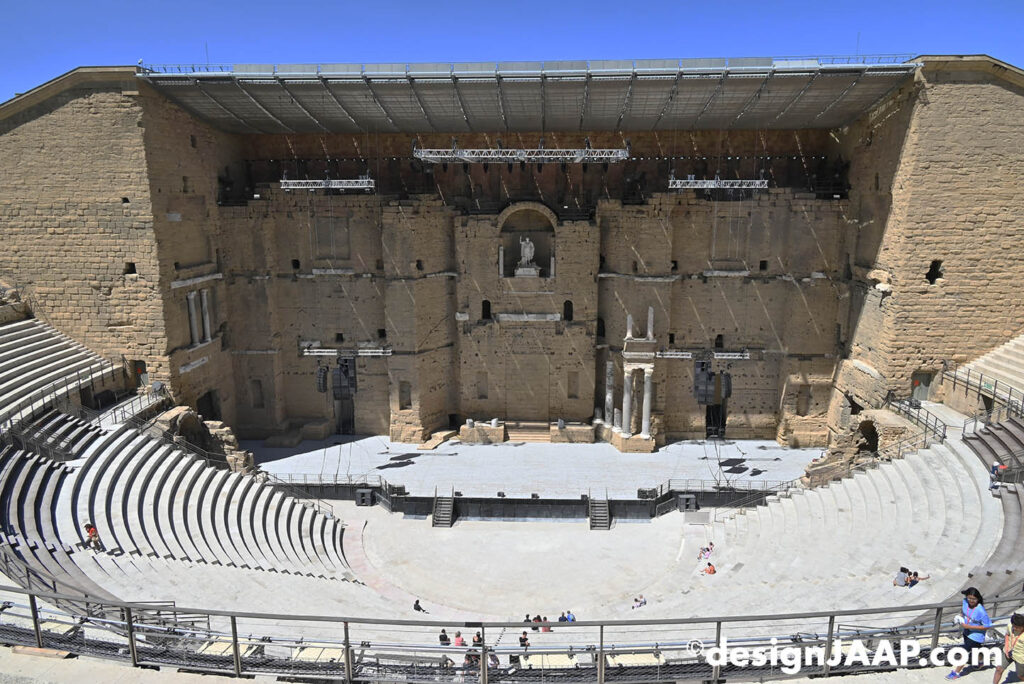The Roman Theatre of Orange (French: Théâtre antique d’Orange) is a Roman theatre in Orange, Vaucluse, France. It was built early in the 1st century AD. The structure is owned by the municipality of Orange and is the home of the summer opera festival, the Chorégies d’Orange.

It is one of the best preserved of all Roman theatres, and served the Roman colony of Arausio (or, more specifically, Colonia Julia Firma Secundanorum Arausio: “the Julian colony of Arausio established by the soldiers of the second legion”) which was founded in 40 BC. Playing a major role in the life of the citizens, who spent a large part of their free time there, the theatre was seen by the Roman authorities not only as a means of spreading Roman culture to the colonies, but also as a way of distracting them from all political activities.
Early Roman theatre were mostly constructed from wood and meant to be temporary structures. In 55 BC Pompey had a stone theatre built in his home city of Rome, and thereafter grand (and permanent) Roman theatres spread widely. The Orange theatre was created under the rule of Augustus, and is believed to be one of the first of its kind in this area of modern-day France. One of the most iconic parts of this structure is the grand exterior facade, which measures 103 meters long and 37 meters high
It has been restored to its former function, primarily for opera, alongside its use as a tourist spot. In 1981, the Roman Theatre was inscribed on the UNESCO World Heritage List for its outstanding preservation and architecture.
Here is a photographic impression of the Roman Theatre of Orange.